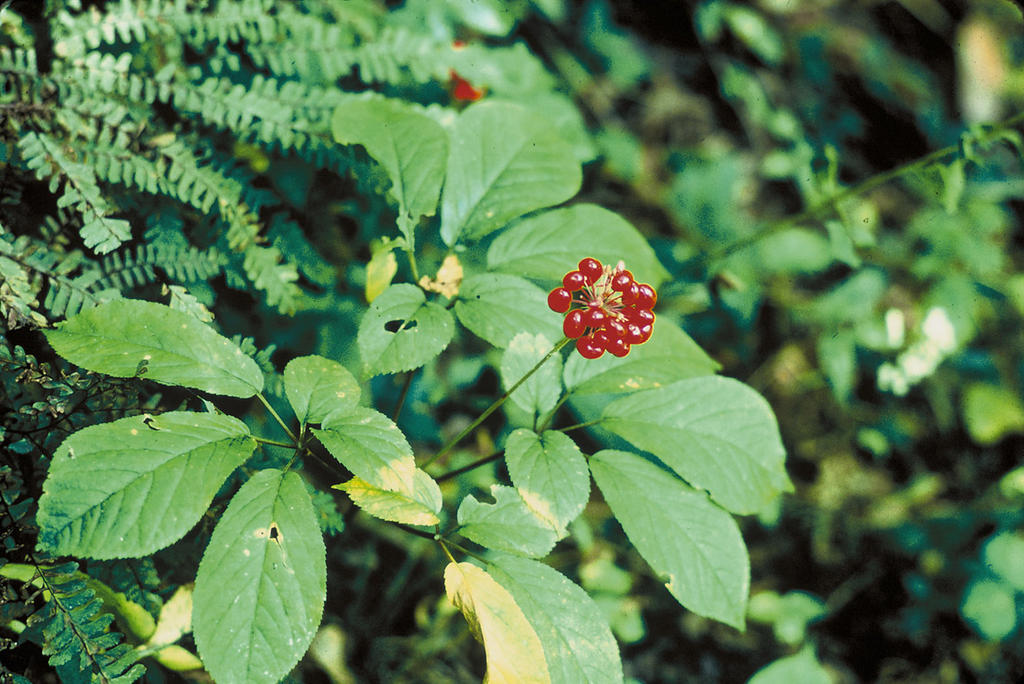Here is an article describing the in vitro activity of Chinese Ginseng on P. aeruginosa biofilm from University Hospital of Copenhegan together with fellows from the Technical University of Denmark and University of Copenhegan, Denmark. These people are in fact well known for their contributions in P.aeruginosa biofilm research
Effects of ginseng on Pseudomonas aeruginosa motility and biofilm formation. FEMS Immunology & Medical Microbiology (DOI: 10.1111/j.1574-695X.2011.00787.x)
Ginseng (Panax Sp.) is a slow growing perennial plant mostly grown in the northern hemisphere. It is known for its wide range of therapeutic use both in traditional and modern medicine. The same group has already published their results on the efficiency of the aqueous extract of Ginseng in preventing animal models from biofilm infection. Now in this paper, they have extended their research in finding out what the Ginseng is doing to the biofilm. They have reported that the extract is neither killing the bacteria (bactericidal), nor inhibiting the growth (bacteriostatic). But they have the potential to inhibit biofilm formation and reduce the formed biofilms. Also, they make the biofilm susceptible for antibiotic treatments, otherwise resistant.
known for its wide range of therapeutic use both in traditional and modern medicine. The same group has already published their results on the efficiency of the aqueous extract of Ginseng in preventing animal models from biofilm infection. Now in this paper, they have extended their research in finding out what the Ginseng is doing to the biofilm. They have reported that the extract is neither killing the bacteria (bactericidal), nor inhibiting the growth (bacteriostatic). But they have the potential to inhibit biofilm formation and reduce the formed biofilms. Also, they make the biofilm susceptible for antibiotic treatments, otherwise resistant.
 known for its wide range of therapeutic use both in traditional and modern medicine. The same group has already published their results on the efficiency of the aqueous extract of Ginseng in preventing animal models from biofilm infection. Now in this paper, they have extended their research in finding out what the Ginseng is doing to the biofilm. They have reported that the extract is neither killing the bacteria (bactericidal), nor inhibiting the growth (bacteriostatic). But they have the potential to inhibit biofilm formation and reduce the formed biofilms. Also, they make the biofilm susceptible for antibiotic treatments, otherwise resistant.
known for its wide range of therapeutic use both in traditional and modern medicine. The same group has already published their results on the efficiency of the aqueous extract of Ginseng in preventing animal models from biofilm infection. Now in this paper, they have extended their research in finding out what the Ginseng is doing to the biofilm. They have reported that the extract is neither killing the bacteria (bactericidal), nor inhibiting the growth (bacteriostatic). But they have the potential to inhibit biofilm formation and reduce the formed biofilms. Also, they make the biofilm susceptible for antibiotic treatments, otherwise resistant.
The concentration for this piece of work is on the mobility of the bacteria. There are three kinds of movements this bacteria can do. Depending on the medium they are in, they can swim, twitch or swarm. Swimming in aqueous environment is mediated by its polar flagellum. Twitching motility needs type-IV pili and swarming motility requires flagella, biosurfactant production and some times type-IV pili.
 Same time, P.aeruginosa biofilms are known to have two subpopulations: motile and non-motile. Together with the interaction between the pili of the motile population and the eDNA contributed by the non-motile population, they form mushroom structures, which are resistant to antibiotics. So, type-IV pili and flagella are important in p.aeruginosa biofilms. Ginseng extract has been shown to enhance swimming and twitching motility, but reduces the swarming motility. Probably Ginseng encourage the cells to move rather than stick to the biofilm. Also the extract promotes phagocytosis of P.aeruginosa by mouse airway phagocytes.
Same time, P.aeruginosa biofilms are known to have two subpopulations: motile and non-motile. Together with the interaction between the pili of the motile population and the eDNA contributed by the non-motile population, they form mushroom structures, which are resistant to antibiotics. So, type-IV pili and flagella are important in p.aeruginosa biofilms. Ginseng extract has been shown to enhance swimming and twitching motility, but reduces the swarming motility. Probably Ginseng encourage the cells to move rather than stick to the biofilm. Also the extract promotes phagocytosis of P.aeruginosa by mouse airway phagocytes.
All the experiments were done on non-muciod as well as mucoid (high level of Extra polysaccharides (EPS)) strains. Although there is a relative reduction in activity on mucoid strains, the Ginseng extract is active in both.
Its good to see components of traditional medicine are studied using modern techniques. There are more number of articles are being published in these lines which is in fact good for the future of modern medicine.
True... And I am happy that they have used the extract instead of extracting an 'active compound'.
ReplyDeleteI think the era of isolating active compound is slowly vanishing... i could see frequently in many forums, ppl started talking about combinations and complex mixtures.. still for an academic intrest, ppl still continue to concentrate on active compounds..
ReplyDelete